
Choosing the right pruning shears
The right model for your needs and budget
Contents
A hand pruning shear is an essential cutting tool every gardener should own, whether maintaining a small balcony, a terrace, a small town garden, a large country garden or an extensive orchard. Bypass pruning shear, professional pruning shear, ratchet pruning shear or anvil pruning shear — choosing the right one is essential, but it can sometimes be hard to know which to pick. To carry out pruning and cutting tasks cleanly and safely, discover how to choose the best pruning shear based on its intended use, your needs and your budget.
Choosing the right pruning shear for different uses
In the garden, pruning and cutting tasks are numerous (roses, bushes, hedging plants, fruit trees, bamboos, conifers, small fruits, climbing plants, perennials…). It is essential to choose a pruning shear according to type of cut. Choice of pruning shear will depend mainly on diameter of branches to be cut and hardness of wood to be cut. Hand pruning shears fall into two main categories :
- bypass or clean-cut pruning shears for cutting green wood, pruning shoots and green, still-flexible stems. They are perfectly suited to pruning living specimens up to 2.5 cm in diameter such as roses, fruit trees, vines and small bushes, and also to climbing plants and perennials whose pruning requires small, repetitive cuts. They are ideal for picking flowers, herbs, vegetables and fruits as well as for topiary maintenance. In this category, a ratchet pruning shear and a spring-action pruning shear are distinguished (the spring sits between the two handles; most models are of this type).
- anvil pruning shears for cutting dead or dry wood, or mature, well-hardened branches. This type of pruning shear can cut slightly thicker shoots, up to 1.5 cm in diameter, while crushing them.
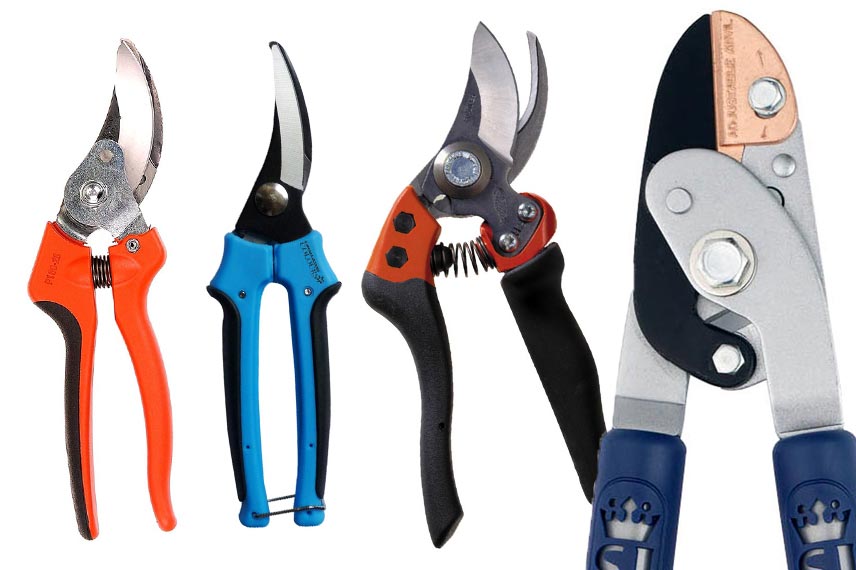
Different models of pruning shears suit wide range of cutting tasks
For branches between 3 and 5 cm in diameter, a lopper or long‑handled lopper will be more appropriate.
Pruning shear "made to fit your hand
To be efficient and comfortable, pruning shear must be perfectly suited to shape of your hand. A common mistake is to choose pruning shear size solely based on diameter of branches to cut without taking into account hand size.
According to size of your hand
Pruning shear must also be chosen according to hand size, so that handles are perfectly suited to user. Sizes of pruning shears vary between about 18 and 25 cm. The larger it is, the larger the handle opening will be. A large opening therefore requires a large hand. While most of our pruning shears suit all hands, you will find models with adjustable hand opening and cutting width that adapt to everyone (Spear & Jackson premium aluminium pruning shear).
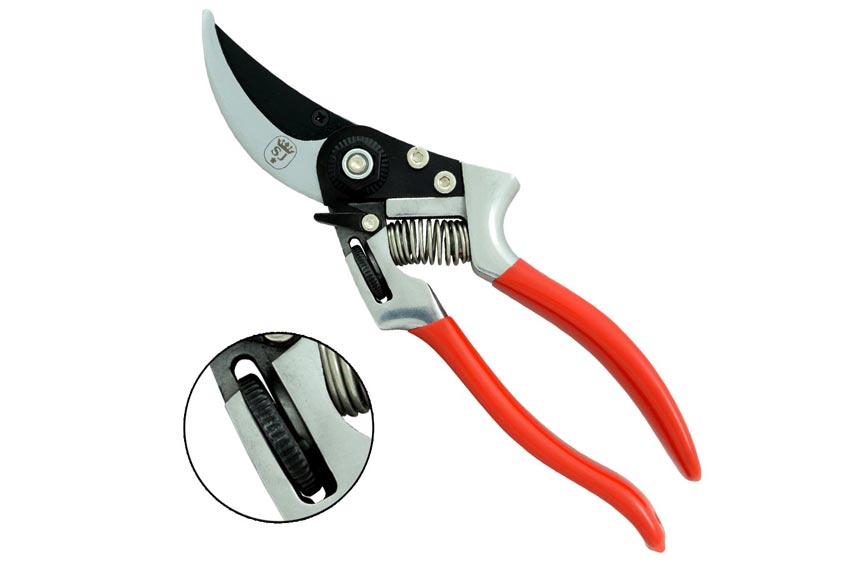
Premium aluminium pruning shear with adjustable opening
Left-handed or right-handed?
It should also be chosen differently if you are right- or left-handed. In our nursery you will find pruning shears with an ambidextrous lock, suitable for right- and left-handed gardeners, such as the Spear & Jackson anvil pruning shear.
A good grip
For greater manoeuvrability, handles may have a soft-touch non-slip coating, bi-material (pruning shears from the Colours collection by Spear & Jackson) which ensures a good grip, firmer hold and high working comfort. There are ergonomic pruning shears designed to limit, even prevent, musculoskeletal disorders (wrist and elbow tendonitis, ligament tears, carpal tunnel syndrome) in intensive pruning shear users.
It can also be selected according to physical strength of pruner. Some pruning shears (Spear & Jackson geared pruning shears) feature a geared cutting mechanism that amplifies cutting force. They are intended for small hands, elderly people, female users or anyone wanting a pruning tool that requires less physical effort.
Most demanding gardeners will appreciate a pruning shear fitted with a blade-locking system operable with one hand.
A question of weight
In addition to fit, weight is a key selection criterion because, in use, comfort is affected. Some will prefer it feather-light, not exceeding 255 grams, while others will want a tool of a certain weight for more precise cutting. Our pruning shears have aluminium or composite material parts, which makes them lighter while preserving efficiency and robustness.
Discover other Secateurs
View all →Available in 1 sizes
Available in 1 sizes
Available in 1 sizes
Available in 1 sizes
Available in 1 sizes
Available in 1 sizes
Available in 1 sizes
Available in 1 sizes
Available in 1 sizes
Different types of pruning shears
-
Bypass pruning shears
Bypass pruning shear, also called clean-cut pruning shear (or clean-cut blades), is most common. It works a little like a pair of scissors and delivers a clean, precise cut without crushing or bruising plant tissues: well suited to living wood because it avoids creating wounds that open the way to fungal diseases. It consists of two curved, movable blades that slide past each other when the handles are closed; a blade sharpened on one face slides along the counter-blade. This cutting method offers improved cutting comfort.
-
Anvil pruning shears
Anvil pruning shear differs from traditional pruning shear because its cutting blade, sharpened on both faces and thicker, is pressed onto a flat counter-blade that acts like an anvil. It works a little like an axe. This type of shear allows cutting relatively large-diameter branches but it crushes wood and plant fibres, which can hinder proper healing and therefore cause disease.
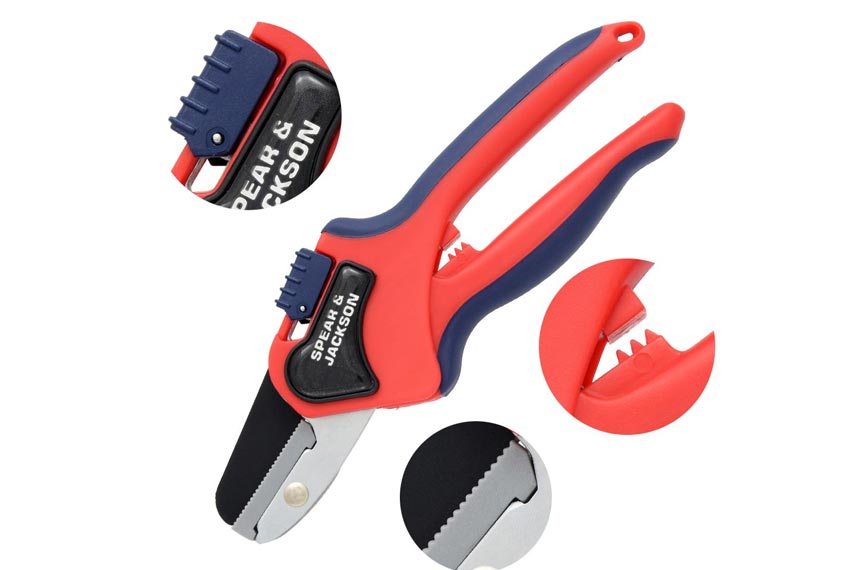
anvil pruning shear, branch crusher
-
Rotating-handle pruning shears
Some pruning shears are fitted with a rotating handle that follows the movement. This mechanism helps reduce hand effort and fatigue, joint pain and blisters during intensive use. Some are also designed with the cutting head inclined vertically and laterally, which helps improve hand/wrist alignment and increases leverage. With this type of shear, cuts feel easier. It is the case with the Spear & Jackson forged‑blade professional pruning shear with rotating handle.
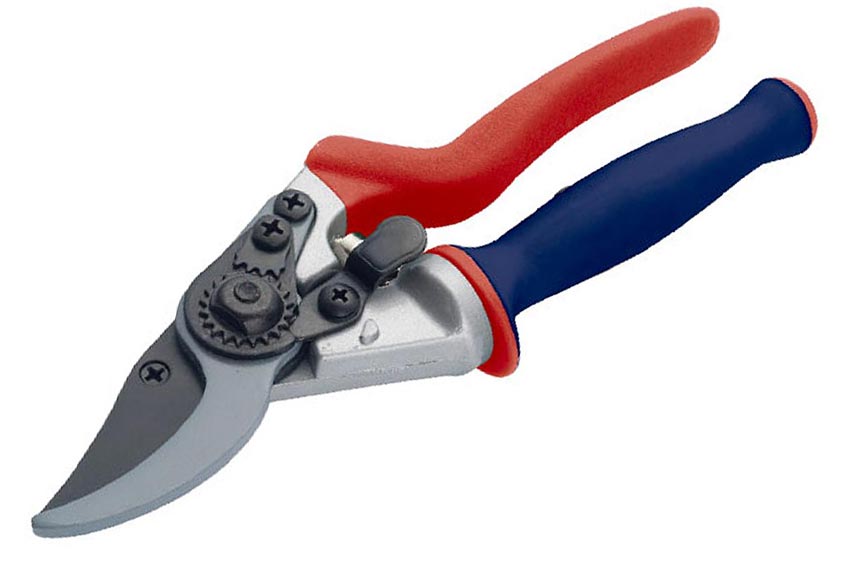
ergonomic rotating-handle pruning shear
-
Professional pruning shears
These pruning shears meet highest demands of professional gardeners and landscapers. Superior manufacture, optimal sharpening processes and profiled non‑slip handles make these models more expensive, exceptionally robust and durable (carbon steel and titanium blades, for example), made from high‑quality, ergonomic materials. Designed to provide maximum comfort to user while delivering performance and longevity.
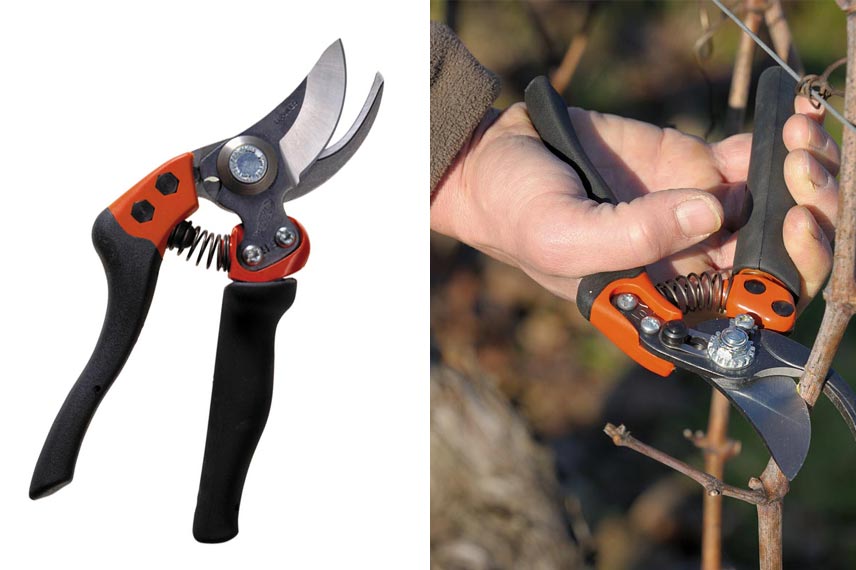
Professional pruning shear provides comfort and working power for intensive tasks
-
Power pruning shears or loppers
These are large pruning shears operated with two hands. Tools used to cut branches of larger diameter beyond 2.5 to 3 cm. Handles are longer or even telescopic depending on model, allowing cutting branches high up without ladder.
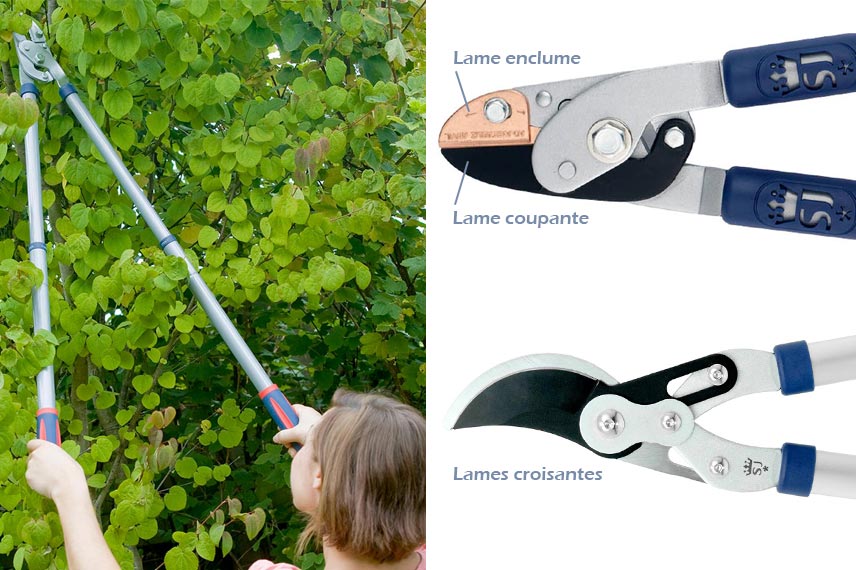
For large branches use loppers
-
Ratchet pruning shears
They allow cutting thicker shoots without requiring force since it is enough to release the shear slightly between ratchet steps. Unfortunately, this type of shear forces repetition of the action, which tends to tire the hands before the cut is completed.
-
Snips
Snips also called fruit snips or flower snips, are pruning shears recognisable by their narrower, tapered blade. Lightweight and manoeuvrable, they provide a clean, precise cut and slip easily between shoots. Ideal for harvesting grapes, small fruits, flowers and vegetables.
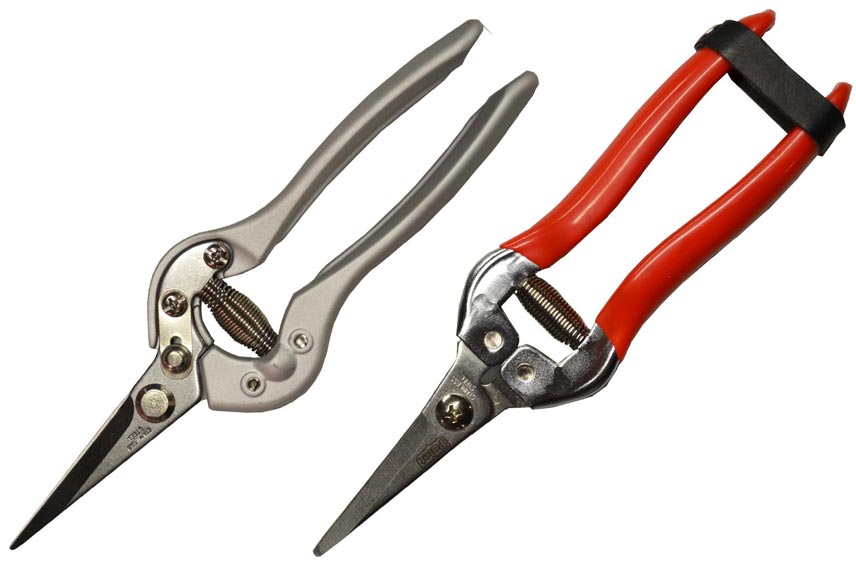
Lightweight pruning shears also called snips
Read also
Garden tools: essentialsChoose quality and sustainability
Pruning shears are the cutting tool you will use most often. Budget is a factor to consider, frequency of use as well. The more often you use them, the more you should opt for a quality model, professional-quality pruning shears. Opting for low prices is not necessarily wise; it is better to choose a model that is comfortable to use and ergonomic, favouring quality of design and manufacture. That will ensure robustness and longevity.
Also make sure you can replace the wear parts on your pruning shears. On the many models we offer, you can find spare parts available. By choosing durable products with parts that can be replaced (rather than disposable ones!), you’ll save money in the long term and avoid having to buy another pair! And if you tend to lose your pruning shears, opt for brightly coloured tools, handy when it comes to finding lost shears in the garden!
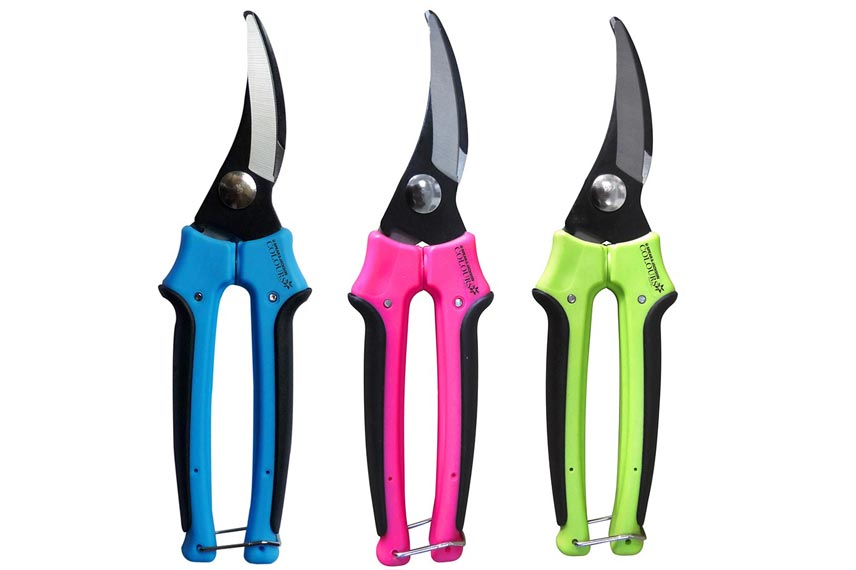
→ Discover our range of pruning shears and manual cutting tools for the garden
- Subscribe!
- Contents
































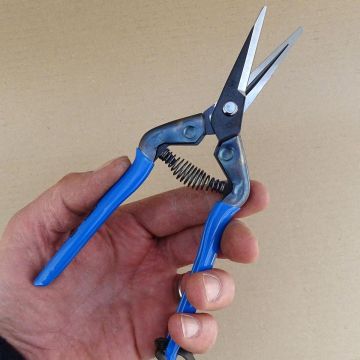
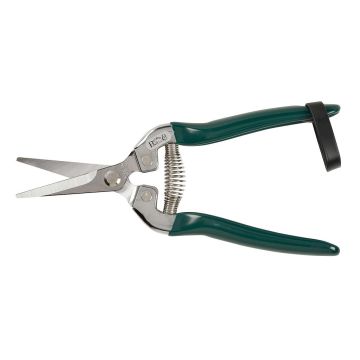
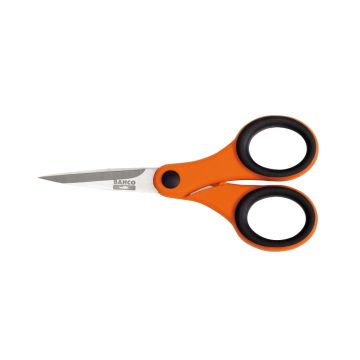
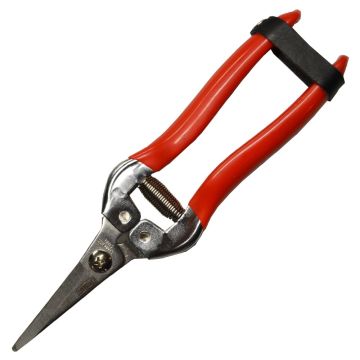
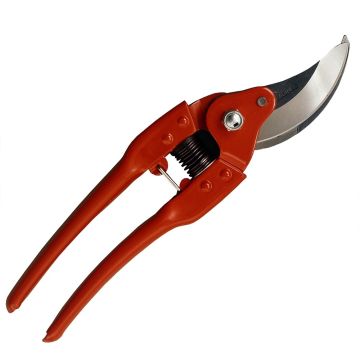
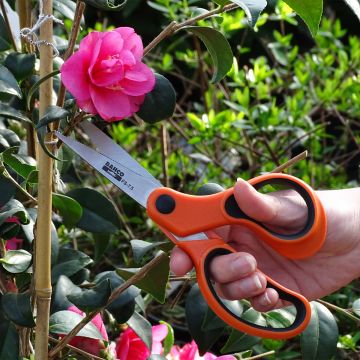

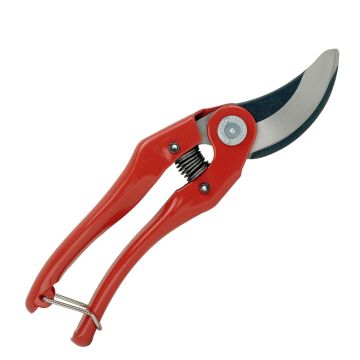

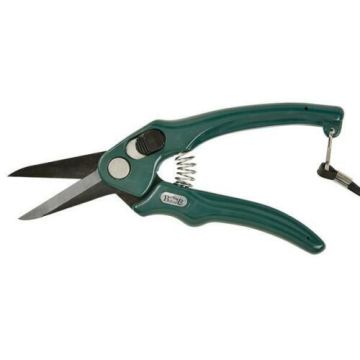
Comments